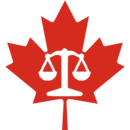| Part of a series on |
| Canadian law |
|---|
 |
| Part of the common law series |
| Tort law |
|---|
| (Outline) |
| Trespass to the person |
| Property torts |
| Dignitary torts |
| Negligent torts |
| Principles of negligence |
| Strict and absolute liability |
| Nuisance |
| Economic torts |
|
| Defences |
| Liability |
| Remedies |
| Other topics in tort law |
|
| By jurisdiction |
| Other common law areas |
Canadian tort law is composed of two parallel systems: a common law framework outside Québec and a civil law framework within Québec, making the law system is bijural, as it is used throughout Canadian provinces except for Québec, which uses private law.[a] In nine of Canada's ten provinces and three territories, tort law originally derives that of England and Wales but has developed distinctly since Canadian Confederation in 1867 and has been influenced by jurisprudence in other common law jurisdictions. As most aspects of tort law in Canada are the subject of provincial jurisdiction under the Canadian Constitution, tort law varies even between the country's common law provinces and territories.
In the country's common law provinces, a tort consists of a wrongful acts or injury that lead to physical, emotional, or financial damage to a person in which another person could be held legally responsible.[1] The two main subcategories of tort law are intentional torts and unintentional torts. Similarly in Québec, there are four conditions necessary for a finding of civil liability under the CCQ:[2]
- Imputability: The capacity of a tortfeasor to "discern right from wrong", and to understand the consequences of their actions.
- Fault: The failure of a tortfeasor to act as "a normally prudent and reasonable person" would have in similar circumstances.
- Damage: Harm or injury suffered by the plaintiff
- Causation: A causal link between the fault of the tortfeasor and the damage incurred by the plaintiff.
The defendant in a tort suit is called the tortfeasor, and most often, financial compensation is what tort victims acquire.[3] All torts require proof of fault in order to determine legal responsibility, however, fault is measured differently for the different types of tort.[3] There are criminal code offences in Canada that could also qualify as tort law under common law. However, most victims do not sue those who are criminally charged since the accused do not have the financial means to pay back the victim or because the accused is incarcerated.[4]
Cite error: There are <ref group=lower-alpha> tags or {{efn}} templates on this page, but the references will not show without a {{reflist|group=lower-alpha}} template or {{notelist}} template (see the help page).
- ^ Allen, Bill Van (2009). Police powers : law, order and accountability. Toronto: Pearson Prentice Hall. p. 43. ISBN 9780132429825.
- ^ Baudouin, Jean-louis. "Law of Delict in Québec". The Canadian Encyclopedia, 23 September 2016, Historica Canada. [www.thecanadianencyclopedia.ca/en/article/delict PDF] Accessed 27 May 2022.
- ^ a b Rock, Nora; Hoag, Valerie (2011). Foundations of criminal and civil law in Canada (3rd ed.). Toronto: Emond Montgomery Publications. p. 165. ISBN 9781552393833.
- ^ Goff, Colin (2011). Criminal justice in Canada (5th ed.). Toronto: Nelson Education. pp. 21. ISBN 9780176501730.